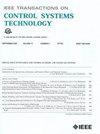自动驾驶汽车接近有行人的无信号人行横道的交互感知最优安全速度控制
IF 3.9
2区 计算机科学
Q1 AUTOMATION & CONTROL SYSTEMS
引用次数: 0
摘要
本文提出的自动驾驶汽车(AV)安全速度策略基于基于场景和网格的随机模型预测控制(SMPC)和概率神经网络(NN)模型,旨在预测行人在接近无信号人行横道时的行为。SMPC问题是为了最小化车辆的行驶时间,同时考虑车辆与行人的相互作用,并保持与行人碰撞的风险低。车辆的控制轨迹很方便地只用两个参数来描述:车辆加速度和目标速度。除了降低计算复杂度外,这种简化在减少模型输入数量方面有利于NN预测模型的设计。通过大规模随机仿真,验证了所提出的SMPC策略与基线控制策略的对比。验证结果表明,SMPC策略在避免行人碰撞的同时显著缩短了车辆行驶时间和减少了激进减速。本文章由计算机程序翻译,如有差异,请以英文原文为准。
Interaction-Aware Optimal Safe Speed Control for Autonomous Vehicles Approaching Unsignalized Crosswalks With Pedestrians
The proposed autonomous vehicle (AV) safe speed strategy is based on a scenario- and grid-based stochastic model predictive control (SMPC) and a probabilistic neural network (NN) model aimed to predict pedestrian behavior when approaching unsignalized crosswalk. The SMPC problem is formulated to minimize the vehicle traveling time, while accounting for vehicle-pedestrian interaction and keeping the risk of collision with pedestrian low. The vehicle control trajectory is conveniently described by only two parameters to be optimized: the vehicle acceleration and the target speed. Apart from reducing the computational complexity, this simplification facilitates the NN prediction model design in terms of lowering the number of model inputs. The proposed SMPC strategy is verified against a baseline control strategy by means of large-scale stochastic simulations. The verification results indicate that the SMPC strategy on average results in significantly lower vehicle traveling time and less aggressive decelerations, while avoiding pedestrian collisions.
求助全文
通过发布文献求助,成功后即可免费获取论文全文。
去求助
来源期刊

IEEE Transactions on Control Systems Technology
工程技术-工程:电子与电气
CiteScore
10.70
自引率
2.10%
发文量
218
审稿时长
6.7 months
期刊介绍:
The IEEE Transactions on Control Systems Technology publishes high quality technical papers on technological advances in control engineering. The word technology is from the Greek technologia. The modern meaning is a scientific method to achieve a practical purpose. Control Systems Technology includes all aspects of control engineering needed to implement practical control systems, from analysis and design, through simulation and hardware. A primary purpose of the IEEE Transactions on Control Systems Technology is to have an archival publication which will bridge the gap between theory and practice. Papers are published in the IEEE Transactions on Control System Technology which disclose significant new knowledge, exploratory developments, or practical applications in all aspects of technology needed to implement control systems, from analysis and design through simulation, and hardware.
 求助内容:
求助内容: 应助结果提醒方式:
应助结果提醒方式:


